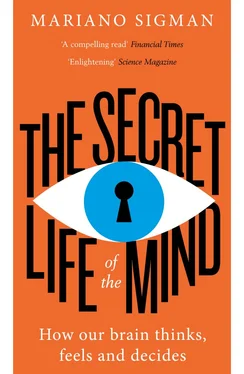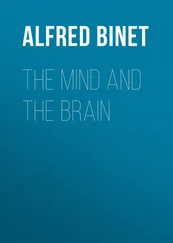The frontal cortex is very immature in the early months of life and it develops slowly, much more so than other brain regions. Because of this, babies can only express very rudimentary versions of the executive functions.
A psychologist and neuroscientist, Adele Diamond, carried out an exhaustive and meticulous study on physiological, neurochemical and executive function development during the first year of life. She found that there is a precise relationship between some aspects of the development of the frontal cortex and babies’ ability to perform Piaget’s A-not-B task.
What impedes a baby’s ability to solve this apparently simple problem? Is it that babies cannot remember the different positions the object could be hidden in? Is it that they do not understand that the object has changed place? Or is it, as Piaget suggested, that the babies do not even fully understand that the object hasn’t ceased to exist when it is hidden under a napkin? By manipulating all the variables in Piaget’s experiment – the number of times that babies repeat the same action, the length of time they remember the position of the object, and the way they expresses their knowledge – Diamond was able to demonstrate that the key factor impeding the solution of this task is babies’ inability to inhibit the response they have already prepared. And with this, she laid the foundations of a paradigm shift: children don’t always need to learn new concepts; sometimes they just need to learn how to express the ones they already know.
So we know that ten-month-old babies cannot resist the temptation to extend their arms where they were planning to, even when they understand that the object they wish to reach has changed location. We also know that this has to do with a quite specific immaturity of the frontal cortex in the circuits and molecules that govern inhibitory control. But how do we know if babies indeed understand that the object is hidden in a new place?
The key is in their gaze. While babies extend their arms towards the wrong place, they stare at the right place. Their gazes and their hands point to different locations. Their gaze shows that they know where it is; their hand movement shows that they cannot inhibit the mistaken reflex. They are – we are – two-headed monsters. In this case, as in so many others, the difference between children and adults is not what they know but rather how they are able to act on the basis of that knowledge.
In fact, the most effective way of figuring out what children are thinking is usually by observing their gaze. fn5Going with the premise that babies look more at something that surprises them, a series of games can be set up in order to discover what they can distinguish and what they cannot, and this can give answers as to their mental representations. For example, that was how it was discovered that babies, a day after being born, already have a notion of numerosity, something that previously seemed impossible to determine.
The experiment works like this. A baby is shown a series of images. Three ducks, three red squares, three blue circles, three triangles, three sticks … The only regularity in this sequence is an abstract, sophisticated element: they are all sets of three. Later the baby is shown two images. One has three flowers and the other four. Which do the newborns look at more? The gaze is variable, of course, but they consistently look longer at the one with four flowers. And it is not that they are looking at the image because it has more things in it. If they were shown a sequence of groups of four objects, they would later look longer at one that had a group of three. It seems they grow bored of always seeing the same number of objects and are surprised to discover an image that breaks the rule.
Liz Spelke and Véronique Izard proved that the notion of numerosity persists even when the quantities are expressed in different sensory modalities. Newborns that hear a series of three beeps expect there then to be three objects and are surprised when that is not the case. Which is to say, babies assume a correspondence of amounts between the auditory experience and the visual one, and if that abstract rule is not followed through, their gaze is more persistent. These newborns have only been out of the womb for a matter of hours yet already have the foundations of mathematics in their mental apparatus.
Cognitive faculties do not develop homogeneously. Some, like the ability to form concepts, are innate. Others, like the executive functions, are barely sketched in the first months of life. The most clear and concise example of this is the development of the attentional network. Attention, in cognitive neuroscience, refers to a mechanism that allows us to selectively focus on one particular aspect of information and ignore other concurrent elements.
We all sometimes – or often – struggle with attention. For example, when we are talking to someone and there is another interesting conversation going on nearby. fn6Out of courtesy, we want to remain focused on our interlocutor, but our hearing, gaze and thoughts generally direct themselves the other way. Here we recognize two ingredients that lead and orient attention: one endogenous, which happens from inside, through our own desire to concentrate on something, and the other exogenous, which happens due to an external stimulus. Driving a car, for example, is another situation of tension between those systems, since we want to be focused on the road but alongside it there are tempting advertisements, bright lights, beautiful landscapes – all elements that, as admen know well, set off the mechanisms of exogenous attention.
Michael Posner, one of the founding fathers of cognitive neuroscience, separated the mechanisms of attention fn7and found that they were made up of four elements:
(1) Endogenous orientation.
(2) Exogenous orientation.
(3) The ability to maintain attention.
(4) The ability to disengage it.
He also discovered that each of these processes involves different cerebral systems, which extend throughout the frontal, parietal and anterior cingulate cortices. In addition, he found that each one of these pieces of the attentional machinery develops at its own pace and not in unison.
For example, the system that allows us to orient our attention towards a new element matures much earlier than the system that allows us to disengage our attention. Therefore, voluntarily shifting our attention away from something is much more difficult than we imagine. Knowing this can be of enormous help when dealing with a child; a clear example is found in how to stop a small child’s inconsolable crying. A trick that some parents hit upon spontaneously, and emerges naturally when one understands attention development, is not asking their offspring to just cut it out, but rather to offer another option that attracts their attention. Then, almost by magic, the inconsolable crying stops ipso facto . In most cases, the baby wasn’t sad or in pain, but the crying was, actually, pure inertia. That this happens the same way for all children around the world is not magic or a coincidence. It reflects how we are – how we were – in that developmental period: able to draw our attention towards something when faced with an exogenous stimulus, and unable to voluntarily disengage .
Separating out the elements that comprise thought allows for a much more fluid relationship between people. No parent would ask a six-month-old to run, and they certainly wouldn’t be frustrated when it didn’t happen. In much the same way, familiarity with attentional development can avoid a parent asking a small child to do the impossible; for example, to just quit crying.
Читать дальше












